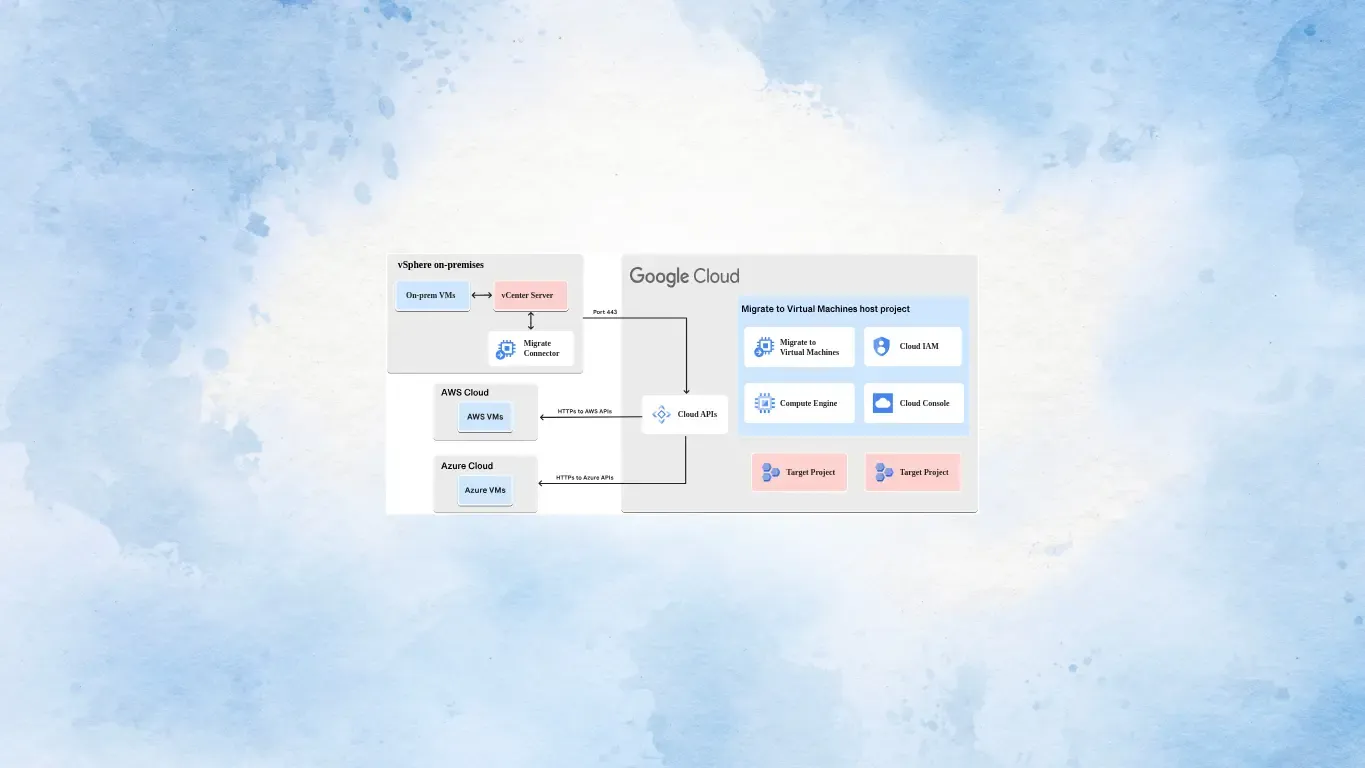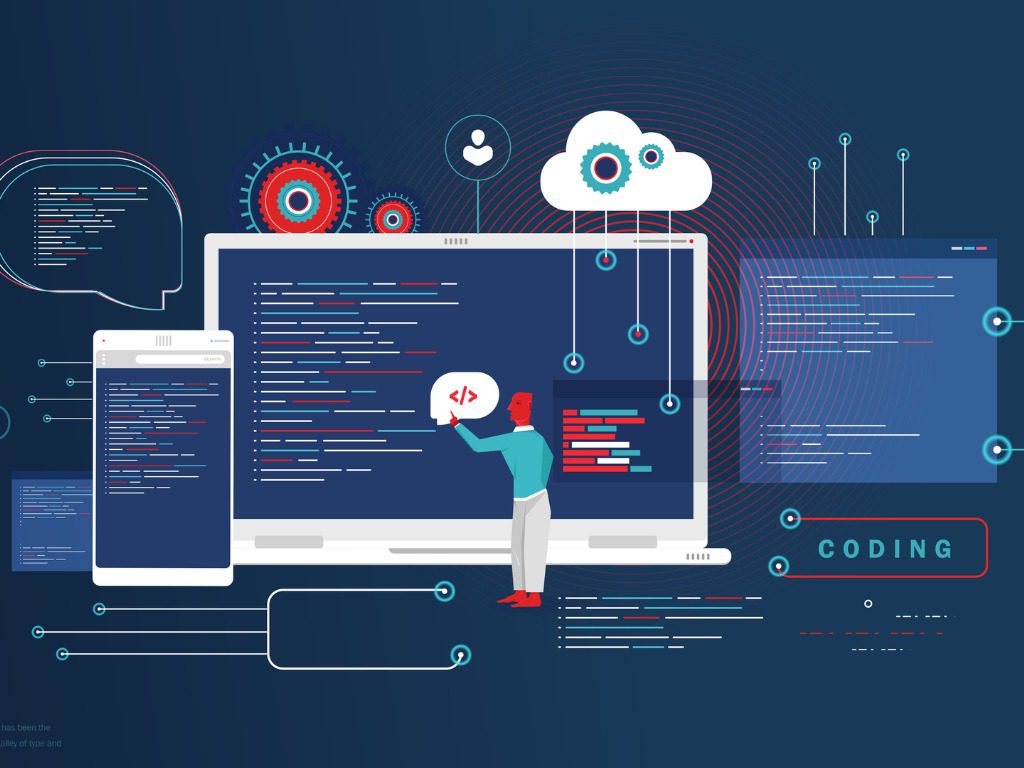Migrating VMs From Google Cloud Platform to Azure
Google Cloud Platform GCP and Microsoft Azure are top players in the cloud infrastructure market These have robust offerings including a commandl...

Google Cloud Platform (GCP) and Microsoft Azure are top players in the cloud infrastructure market. These have robust offerings, including a command-line interface (CLI) and a Web console for managing the services. Unfortunately, GCP doesn’t offer as many built-in services and features when compared to Azure. For instance, with Azure, you get a built-in disaster recovery as a service (DRaaS) feature as well as backup. Coupled with the rising panic over the medium-term future of GCP, it is easy to see why you might consider migrating your VMs from Google Cloud Platform to Azure.
This article covers how to verify prerequisites for migration, and prepare Azure resources with Azure Migrate: Server Migration and the GCP VM instances for migration. Additionally, it delves into setting up the replication appliance and deploying the configuration servers, installing the Mobility service on GCP VMs, and enabling replication for VMs. The idea is to empower you to run a test migration that ensures everything’s working as expected and ultimately runs a complete migration of your VMs to Azure. Note that as a prerequisite for migration, you must have an Azure subscription. Additionally, keep in mind that the scope of the migration will depend on the type of services you use.
Perform a VM Discovery and Migration Assessment
The first step towards migration is performing a VM discovery and migration assessment. The goal is to right-size your GCP VMs for migration to Azure and possibly also estimate Azure run costs.
To set up the discovery and assessment, you’ve got to first set up your Azure and prepare your GCP VMs for assessment. While Azure Migrate uses password authentication when discovering GCP VM instances, GCP instances don’t support password authentication by default. As such, you’ll have to enable this password authentication on GCP. While it is recommended that you try out an assessment, performing one is not mandatory for a successful migration.
Prerequisites for VMs Migration From Google Cloud Platform to Azure
Before embarking on the migration, you want to ensure that the GCP VMs you want to migrate is running on a supported OS. You ought to consider that GCP VMs are thought of as physical machines during migration. As such, you’ll have to review what operating systems and kernel versions are best for physical server migration workflow.
It is recommended that you perform a test migration to hopefully validate that the VM is working as expected before the actual migration. You’ve got to go a step further to ensure that your GCP VMs comply with the supported configurations needed for migration to Azure. Additionally, you want to check whether the GCP VM you replicate to Azure is compliant with Azure VM requirements. Check out for any changes that need to occur before migrating from Google Cloud Platform to Azure. If you were to migrate the VM before instituting these changes, your VM might not boot up in Azure.
Preparing Azure Resources for Migration
Fortunately, Microsoft provides a hub for migrating VMs to Azure-Azure Migrate. You want to create a project on this platform that requires that you have permission from the account’s contributor or owner. Having attained or assigned the Azure account permissions, you can then proceed to create an Azure network. The latter requires setting up an Azure virtual network (VNet). Once you’ve replicated to Azure, the created VMs aggregate within the Azure VNet.
Preparing GCP Instances for Migration
Here, you’ll be preparing and deploying a replication appliance for migration. Note that Azure Migrate-Server Migration utilizes a replication appliance to replicate machines to Azure. This appliance will run a configuration server and a process server that acts as a replication gateway. After preparing the machine for the replication appliance, it’s time to prepare for appliance deployment. You are required to set up a separate GCP VM to host the replication appliance. Note that the appliance should not, under any circumstances, be installed on a source VM that you intend to replicate. Similarly, it shouldn’t be installed on the Azure Migrate discovery and assessment appliance that you installed earlier.
Setting up the Replication Appliance
The first step of migration includes replicating appliances. You will require to download the installer file to set up the appliance for GCP VMs migration. You will then run the replication appliance setup files. Once installation is complete, the Appliance configuration wizard has launched automatically. Within the replication appliance, you might find agent installers. Once you find the right installer, you can install the agent on each machine you intend to migrate. You can also track and monitor replication status within the portal notifications. You simply need to click on Replicating server in Azure Migrate-Server Migration.
Running a Test Migration Before Migrating From Google Cloud Platform to Azure
 Once delta replication is in effect, you want to run a test migration for the VM before embarking on the complete migration. This is ample opportunity to discover any potential issues before the actual migration. You can use this replicated test Azure VM to validate the migration and perform app testing.
Once delta replication is in effect, you want to run a test migration for the VM before embarking on the complete migration. This is ample opportunity to discover any potential issues before the actual migration. You can use this replicated test Azure VM to validate the migration and perform app testing.
Migrating GCP VMs
The moment you’ve verified that the test migration works as expected, it is time to migrate the GCP VMs. In the Azure Migrate project, you will proceed to Servers, then Azure Migrate-Server Migration, and ultimately click Replicating servers. In Replicating machines, you’ll right-click on Migrate and proceed to Shut down virtual machines and perform a planned migration with no data loss. Once you click on Ok, the migration will commence. Soon as the migration is complete, you can then view and manage the VM from the Virtual Machines page.
Completion of Migration From Google Cloud Platform to Azure
The moment the migration is complete, you can click on Stop migration. This will stop the replication for the GCP VM, remote it from the Replicating servers and clean up replication state information for the VM. For monitoring and management, consider deploying Azure Cost Management, as this will monitor both the resource usage and spending. Overall, migrating your VMs from GCP to Azure is never a simple move. Still, with the right tools, migrating at the VM level should be relatively straightforward. When done right, there should be little or no downtime and, most importantly, no unexpected cost surges. Agile IT had migrated thousands of companies to Microsoft 365 and Azure with minimal end-user impact. Migrating to Azure can simplify management and security while reducing engineering costs with broader, more experienced workforce availability. To find out how Agile IT can help facilitate your move to Azure, request a quote today.





